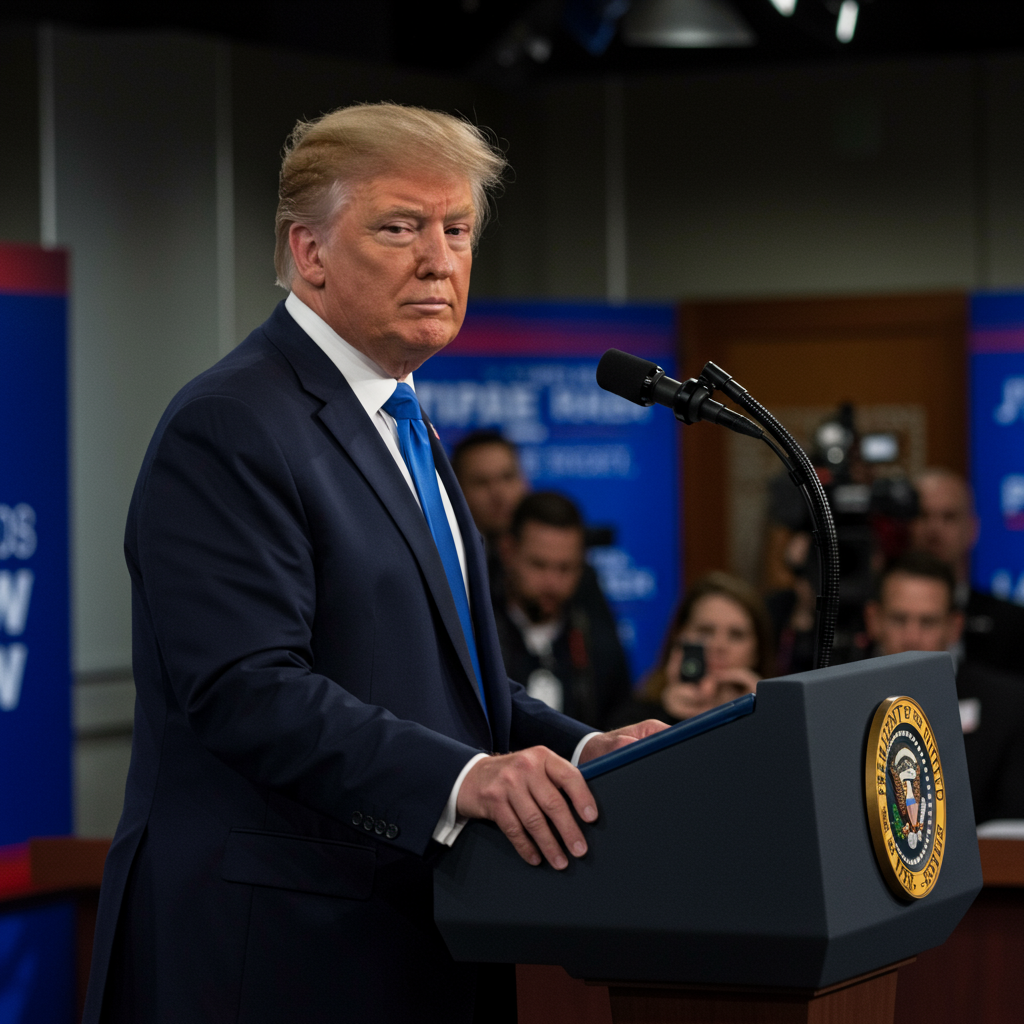Tensions are soaring in the Middle East as the conflict between Israel and Iran enters its seventh day, marked by escalating strikes and international alarm. At the center of the immediate uncertainty is U.S. President Donald Trump, who is weighing whether to authorize potential U.S. military action against Iran, specifically targeting its nuclear facilities.
According to the White House, President Trump has stated he will make a decision on U.S. involvement within the next two weeks. This timeline, relayed by White House press secretary Karoline Leavitt, is directly tied to the possibility of forthcoming negotiations with Iran. Trump cited a “substantial chance of negotiations that may or may not take place” in the near future as the reason for delaying his decision.
The U.S. and Israel’s stated demands for any acceptable diplomatic outcome are clear: Iran must immediately cease all uranium enrichment operations and eliminate any capability to produce nuclear weapons. This two-week window represents an extended timeline compared to some earlier suggestions that a decision might come sooner.
The Urgent Nuclear Question
Underpinning the crisis is the persistent concern about Iran’s nuclear program. The White House now asserts that Iran possesses all the necessary components to produce a nuclear weapon, requiring only a decision from Supreme Leader Ayatollah Ali Khamenei to proceed. According to this assessment, once that decision is made, Iran could potentially complete a weapon within a couple of weeks – a development the White House describes as an “existential threat” to Israel, the United States, and the world. This timeframe echoes previous U.S. estimates.
However, this urgent assessment appears to diverge from previous U.S. intelligence community consensus. Just months prior, the Director of National Intelligence testified that Iran was not actively building a nuclear weapon and that Khamenei had not authorized such a program, although acknowledging Iran’s growing enriched uranium stockpile and increasing public discussion within Iran about nuclear weapons.
Trump’s decision-making process on this critical issue is described as informal and centered around a small group of key advisors, including his Vice President, chief of staff, deputy chief of staff, and Secretary of State (serving as interim national security adviser). While he consults military and intelligence leaders, other officials who hold differing views have reportedly been sidelined. He also “crowdsources” opinions from outside contacts, a practice that has reportedly divided his supporters. Notably, former advisor Steve Bannon, who recently met with Trump, is reportedly a vocal opponent of U.S. military intervention, advocating for Israel to conclude the conflict it initiated. An anonymous Republican senator also speculated that Trump might prefer to delay a decision, allowing Israel to continue its actions.
It has been reported that Trump has already approved plans for potential attacks on Iran, though a final execution order has not been given. He has publicly maintained an air of strategic ambiguity, stating, “I may do it. I may not do it.”
Escalation and Impacts on the Ground
The week-long conflict has seen significant reciprocal strikes. Israeli forces have targeted Iranian nuclear facilities, including the heavy water reactor at Arak and a nuclear weapons development site near Natanz. Satellite imagery reportedly shows notable damage to the main dome and other structures at the Arak reactor complex. Israel claims these strikes have set back Iran’s nuclear program by a few months but haven’t eliminated it entirely, vowing to increase the intensity of attacks, particularly after an Israeli hospital was hit.
Iran has responded with missile and drone attacks. A major point of contention is the Iranian ballistic missile strike on the Soroka Medical Center, a large public hospital in Beersheba, southern Israel. Iranian sources claim their missile was aimed at a nearby Israeli military command and intelligence center and that the hospital suffered only “superficial damage” after being “largely evacuated.” Israeli officials vehemently dispute this, calling it a “war crime,” reporting a direct hit, extensive damage to a surgical building, and dozens of injuries and hospitalizations linked to the attack. Other Iranian strikes have also caused damage in residential areas, including near Tel Aviv.
An Israeli intelligence official has noted that recent Iranian missile launches have demonstrated faster speeds, reducing warning times for Israel’s defenses, and appear to employ precise navigation systems, increasing their accuracy. Despite the strikes against Iran, the official believes the Iranian regime retains the capacity and will to continue launching attacks, pushing back against ideas of its imminent collapse. Iran has also accused Israel of committing a war crime by targeting its nuclear facilities.
The human cost of the conflict is becoming increasingly clear, though casualty figures vary. A Washington-based human rights group reports at least 639 people killed in Iran by Israeli strikes, including civilians and security forces, with over 1,300 wounded. Iran’s Health Ministry reported over 2,500 injured overall, with about 500 still hospitalized, and confirmed two medical workers killed. Israel reports 24 deaths and over 2,300 hospitalizations since the conflict began, with hundreds hospitalized overnight, including those from the Soroka attack.
Iran has also experienced a severe, nationwide internet shutdown, described as the worst since 2019, significantly curtailing communication for its citizens and reportedly rendering even most VPNs ineffective. Residents have reported fears about receiving timely evacuation warnings, hearing explosions, seeing others flee to rural areas, and facing increased prices and difficulty obtaining necessities.
US Military Posture and International Reactions
Amidst the heightened tensions, the U.S. military has reportedly made defensive adjustments to its force posture in the region, including relocating some aircraft and vessels. Looking ahead, the U.S. plans to significantly increase its naval presence, with multiple aircraft carrier strike groups expected to operate in the Middle East and Mediterranean, providing the administration with additional options for protecting U.S. interests and personnel. Concern remains for the vulnerability of the approximately 40,000 U.S. troops stationed in the Middle East to potential Iranian counterattacks.
Internationally, the conflict has drawn sharp reactions. Iran’s Supreme Leader has dismissed Trump’s call for surrender as “ridiculous” and warned of “irreparable damage” if the U.S. intervenes. Iran’s Foreign Minister is scheduled to meet with EU and European foreign ministers for talks in Geneva. Russia and China have condemned Israel’s strikes, particularly on nuclear facilities, urging an immediate ceasefire and de-escalation, with China facilitating the evacuation of its citizens. North Korea has also condemned Israel’s actions as a “hideous act of aggression.”
Nuclear Targets and ‘Bunker Busters’
Should the U.S. decide on military action, key Iranian nuclear sites would likely be targets. While Israel has already struck facilities like the Arak reactor (aiming to disable its plutonium production capability) and a Natanz development site, Iran’s Fordo enrichment facility presents a unique challenge. Located deep inside a mountain, it is believed to be reachable only by the U.S. military’s GBU-57 Massive Ordnance Penetrator – the largest non-nuclear bomb in the world, often dubbed the “bunker buster.” Experts note the potential risks of dropping such a powerful weapon on a site containing radioactive materials, although Israeli officials reportedly dismiss radiation concerns, claiming such an operation could be executed safely. Reports indicate Trump has been briefed on targeting Fordo and believes destroying it is necessary for “finishing the job.”
As the clock ticks on President Trump’s two-week decision window, the Middle East faces a precarious period, balancing the slim hope of diplomacy against the immediate reality of escalating conflict and the looming threat of a wider regional confrontation centered on Iran’s nuclear ambitions.


